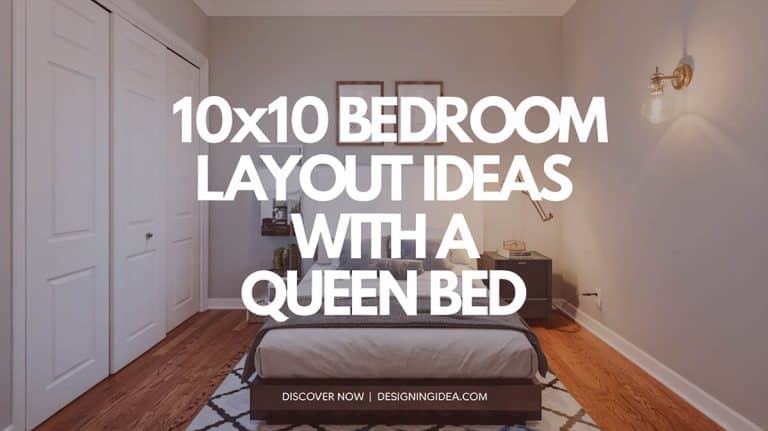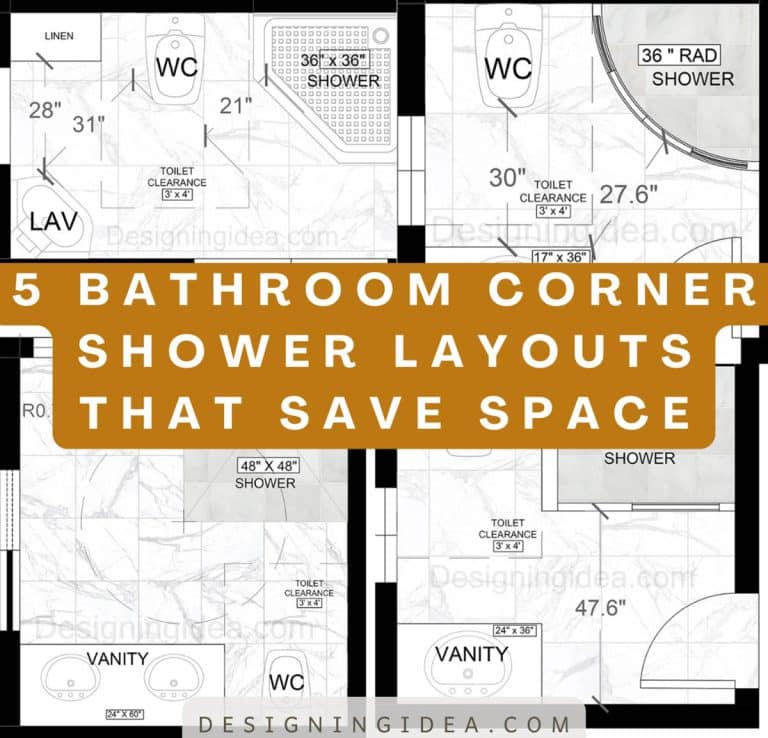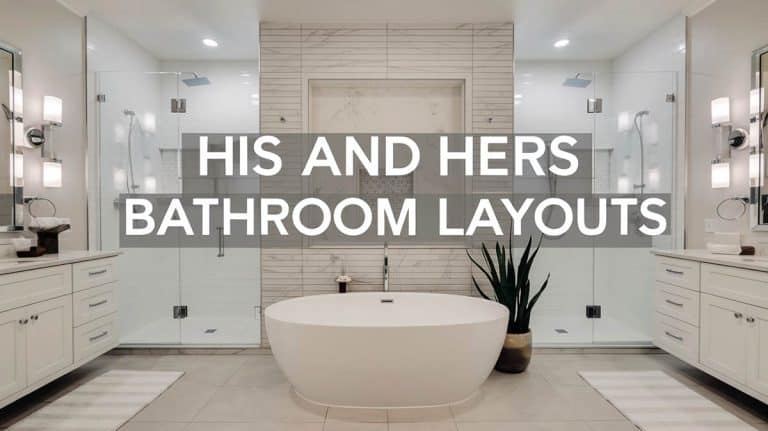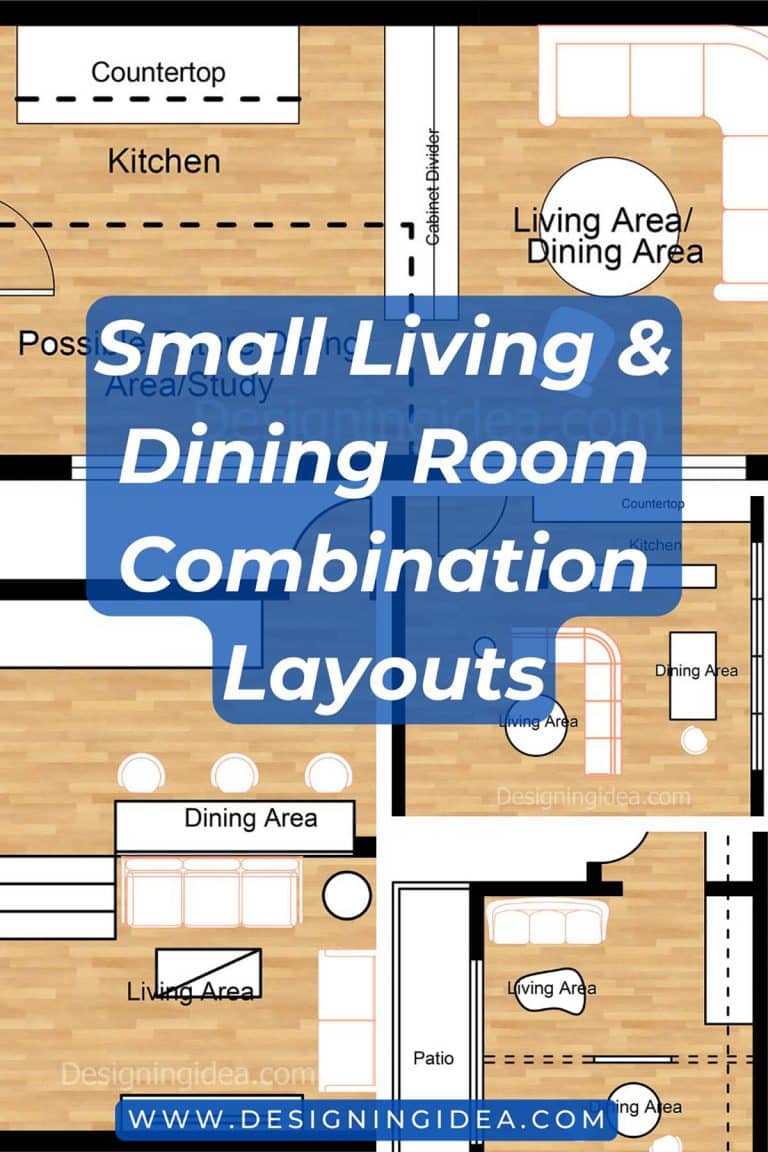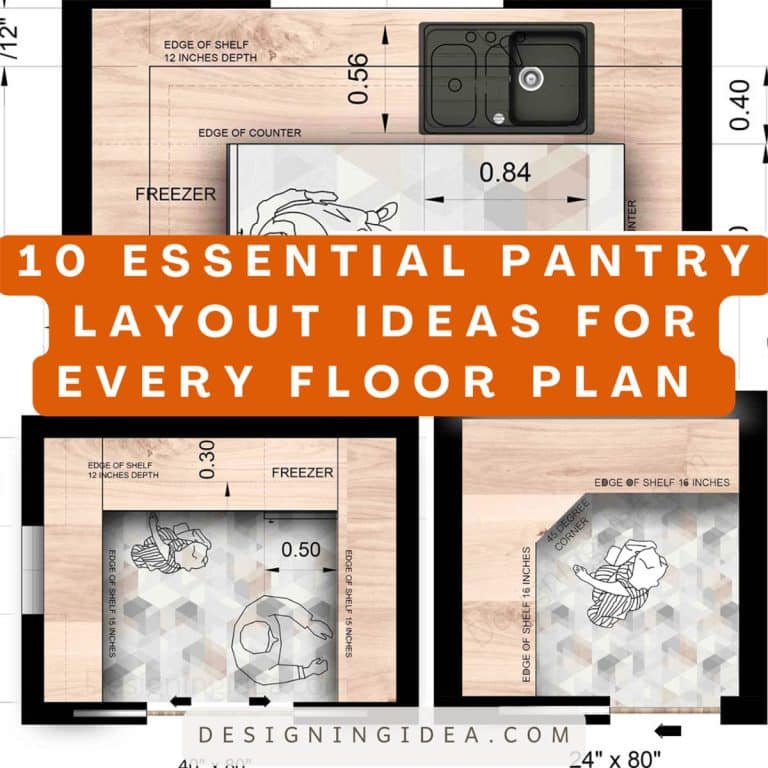10 Tiny House Layout Ideas That Feel Spacious
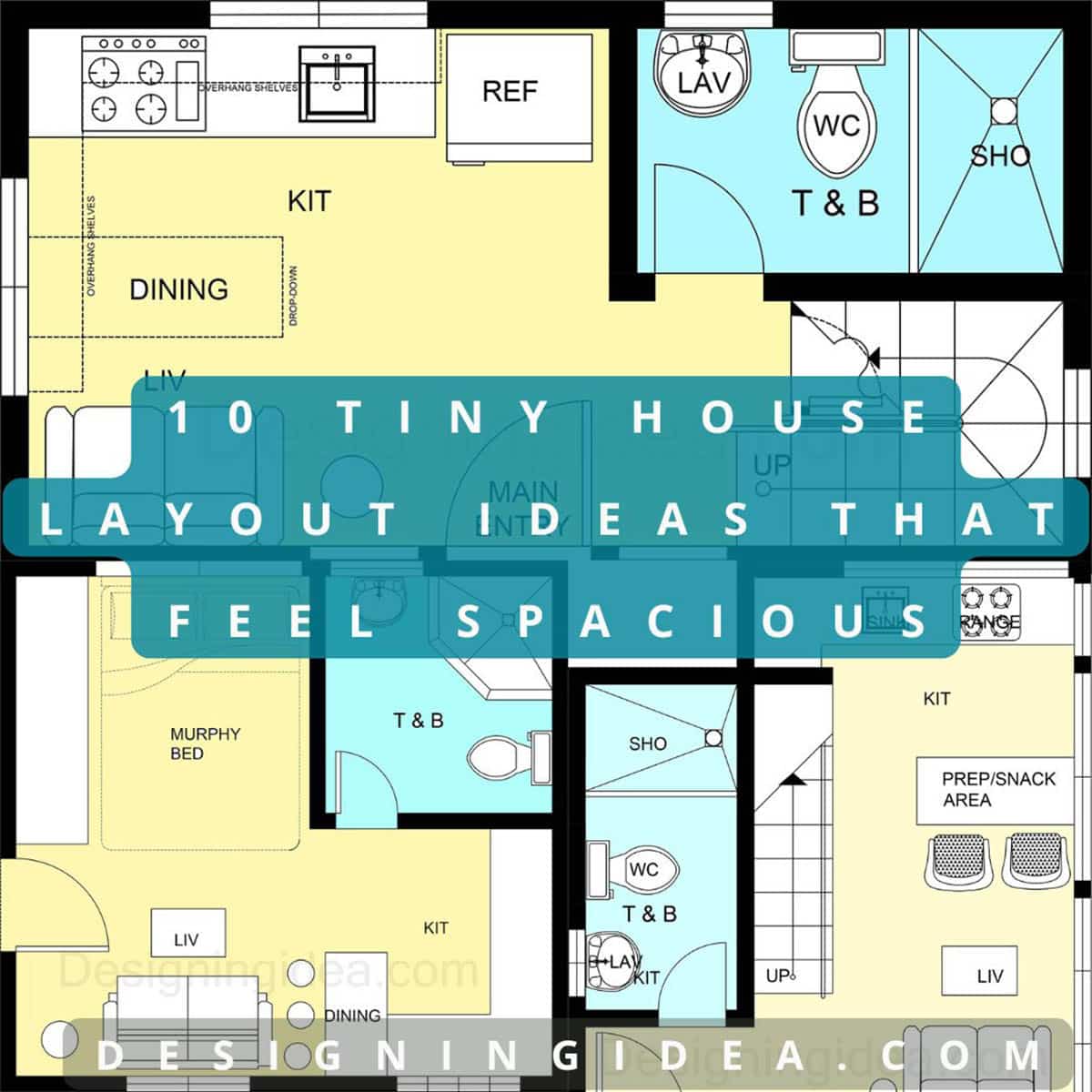
For the frequent backpacker to startup couples, tiny homes are versatile spaces that can cater the modern needs of homeowners today and often challenging conventional designs. The following are 10 tiny house layout ideas that you can easily transition an existing layout or take as inspiration for a new build and adapt for your lifestyle or preferences.
Tiny Home Loft Bedroom with Open Living Space
A sleeping loft accessed by a ladder or staircase above the kitchen and bathroom, with an open living area underneath. Ideal for keeping the footprint small while providing a cozy nook for sleeping.
Ground Level
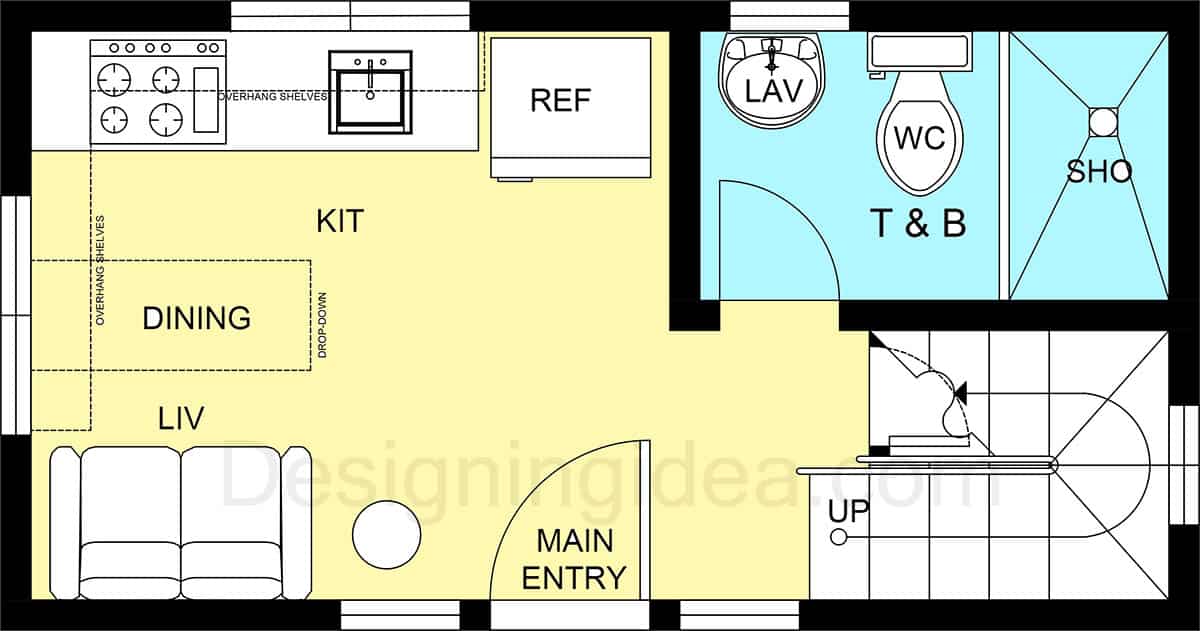
The main entry point is oriented at the center to provide both zones (private and social) access while minimizing overlapping traffic. At the left side is the common functional areas namely the living, dining and kitchen. The said social spaces are grouped together to utilize the space and provide flexibility.
Also, at the same level is the toilet and bath, complete with water closet, lavatory and a shower area. Placing the toilet and bath at the same level and oriented at the same side reduces plumbing costs. The almost straight-line pipe with reduced bends and redirected water and sewer lines reduces future problems. Typically, you’ll need a vent or stack pipe to provide proper airflow especially with multiple fixtures on one pipe line.
Second Level

The second level has a sleeping area with a provision for a walk-in closet or terrace. The loft space can be walled along the staircase or left open for easy access. The width is enough for a single or twin bed. The sleeping area can easily access the toilet and bath via stairs without the need for passing through the common areas.
- Loft Bed: The bedroom is located on a loft above the living area, accessed by a ladder or staircase.
- Open Living Area: The main living space remains open and uncluttered, maximizing available room.
- Privacy: The loft provides a sense of privacy and separation from the living area.
- Storage: The under-bed space can be used for storage, such as drawers or bins.
Two-Loft Layout
One loft serves as the bedroom, while the second loft can be used for storage or an additional sleeping space for guests. This arrangement is great for families or people who frequently host guests.
To accommodate a double-loft plan, the floor has a linear/elongated layout where two lofts are accessed separately from the central space. Since the kitchen and dining has a generous space compared to other areas, it is perfect to accept traffic for the two lofts. The living room is separate from the rest of the areas to ensure privacy for both guests and occupants.
The loft above the toilet and laundry area can accommodate a queen-sized bed but additional soundproofing is needed to drown off the noises below.
- Maximized Space: This design efficiently utilizes vertical space, ideal for small homes or tiny houses.
- Distinct Areas: The two lofts create separate and private spaces within the home.
- Flexibility: The second loft can be adapted to suit your changing needs.
- Additional Storage: The under-loft space provides valuable storage options.
Ground Level

Second Level 2

Tiny House With Fold-Out Furniture Design
Use fold-out beds, tables, and chairs that can be stored when not in use, creating a multi-functional space that can shift from living area to bedroom or dining room with ease.
The dining table has the option to be tucked out of the way either folded or inserted into the countertop just like drawer or a combination of the two mechanisms. This leaves an open space for other activities when needed and adds negative space. Moveable or collapsible tables and other types of furniture can be integrated into a small space. For instance, a sofa can turn into a bed, or a table can be reconfigured to serve as an extension of the countertop. Etc.
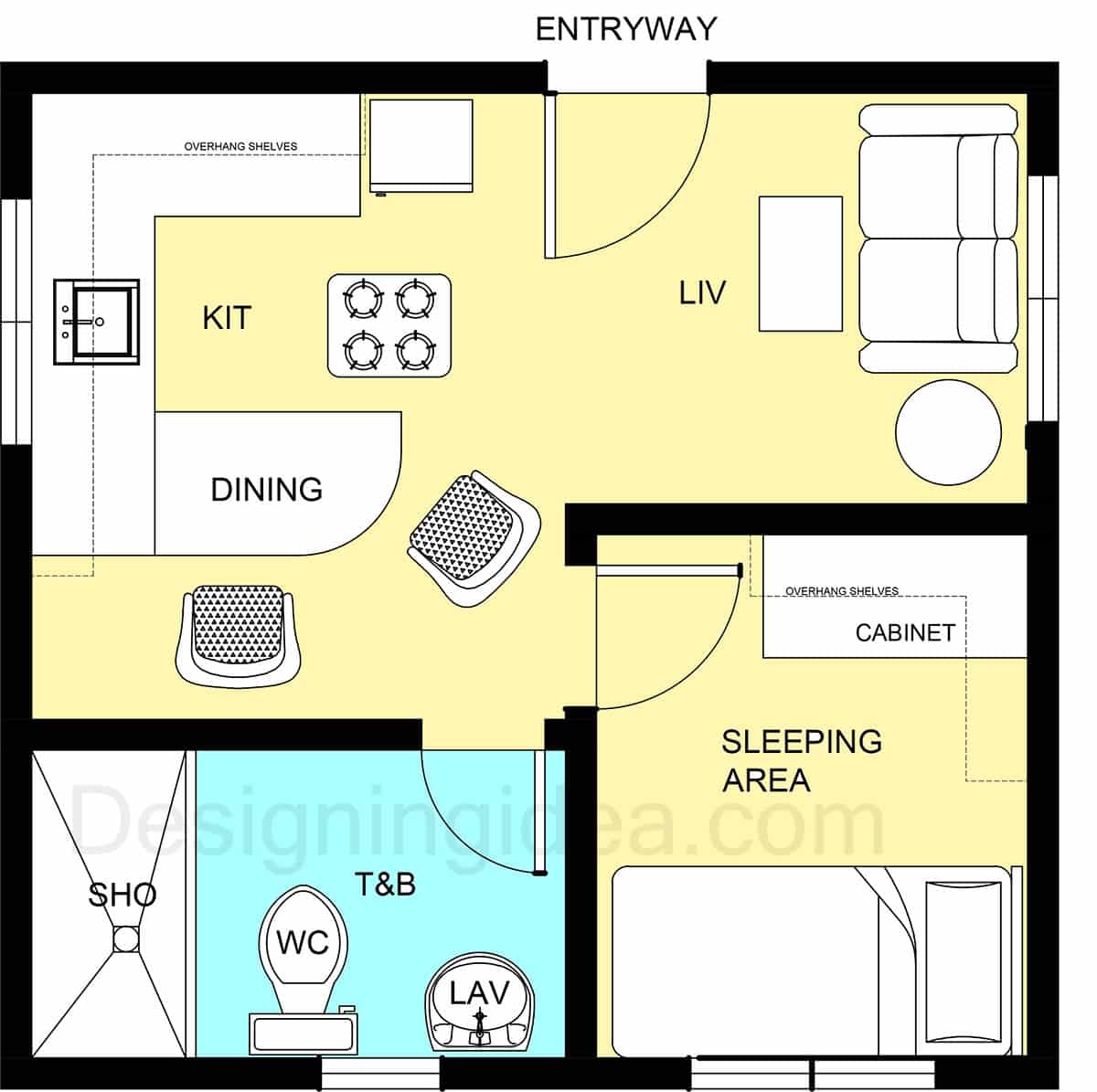
Due to its square footprint, this home design is best for an ADU, casita, micro-cabin or cottage placed on a permanent foundation.
- Murphy Beds: These wall-mounted beds fold down from the wall when needed and can be concealed when not in use.
- Fold-Out Tables: Foldable tables can be stored away when not in use and pulled out for dining or working.
- Fold-Out Chairs: Foldable chairs provide additional seating when needed and can be stored away to save space.
- Fold-Out Sofas: Some sofas have hidden beds that can be pulled out for sleeping.
Open Floor Plan with Murphy Bed
Keep the main living space open and airy with a fold-down Murphy bed. The bed can be hidden during the day to use the room as a living area or workspace.
For tight spaces, the murphy bed or a bed that can be tucked away flushed into a wall when not used to give way to an open space or other furniture. Customized or ready-made murphy beds can turn into a sofa, shelf, TV console or table.
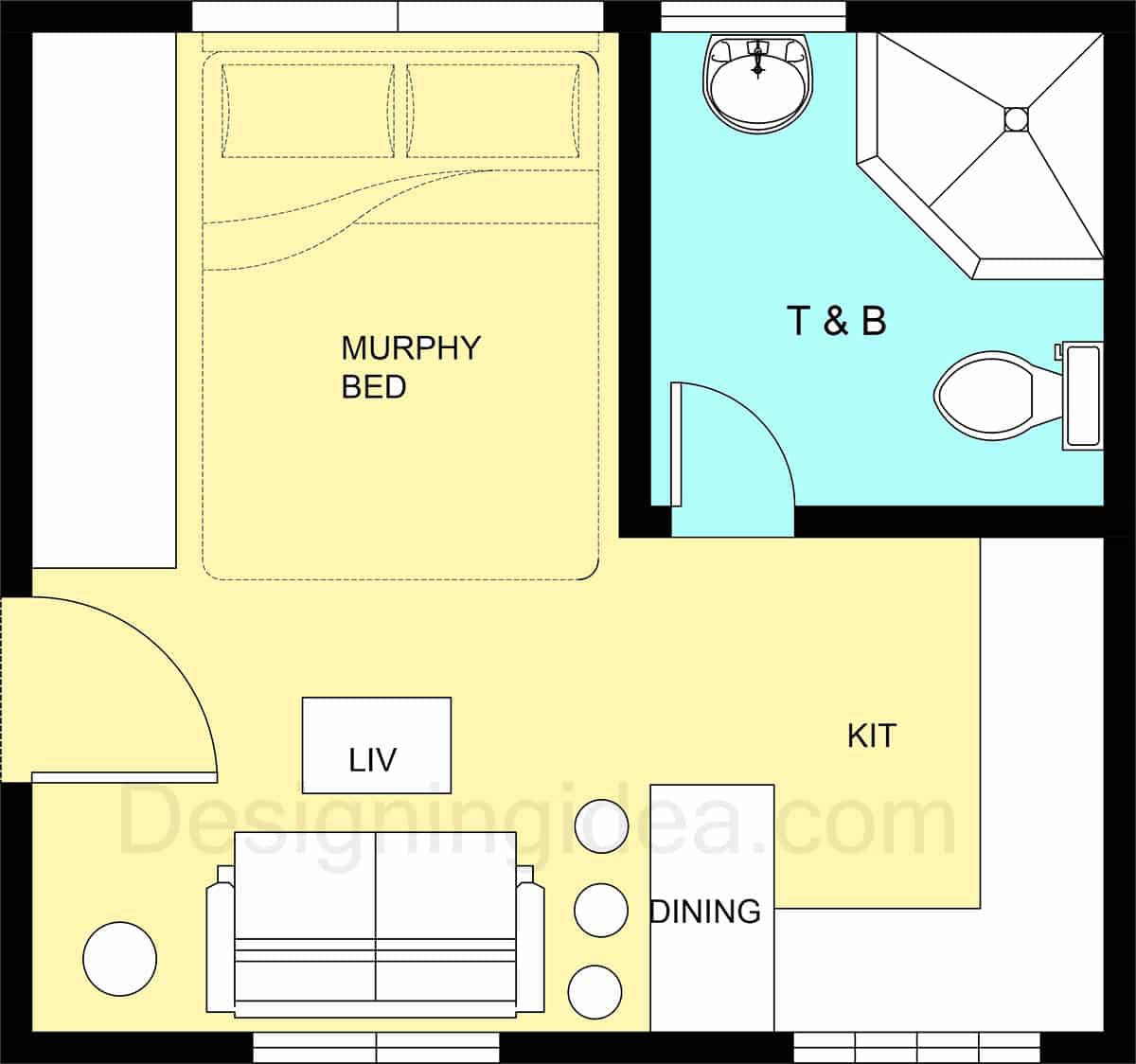
Ideal for Tight Spaces:
- Tiny Houses: Murphy beds are perfect for maximizing space in tiny homes.
- Studio Apartments: They offer a practical solution for studio apartments where living and sleeping areas are combined.
- Small Bedrooms: Murphy beds can help create a more spacious feel in small bedrooms.
This floorplan layout is perfect for students as it provides an ample space for study or crafting since the murphy bed leaves a large open space when fastened up. Integrate slide or pull-down tables or moveable furniture to rearrange the space to adapt on the activity.
Built-in Features: Some Murphy beds include built-in features such as shelves, drawers, or a small desk.
Style: Murphy beds can be designed to match your home’s decor, from modern to traditional.
Materials: Choose from a variety of materials, including wood, metal, or fabric.
Home Layout With Corner Kitchen and Island
Use a corner kitchen layout to save space, adding a small island or foldable countertop that doubles as a dining table and prep space.
A corner kitchen layout is an excellent option for small spaces, as it efficiently utilizes the available area. By placing the kitchen in a corner, you can create a more open and spacious feel in the rest of your home. To maximize functionality and dining space, consider adding a small island or foldable countertop.
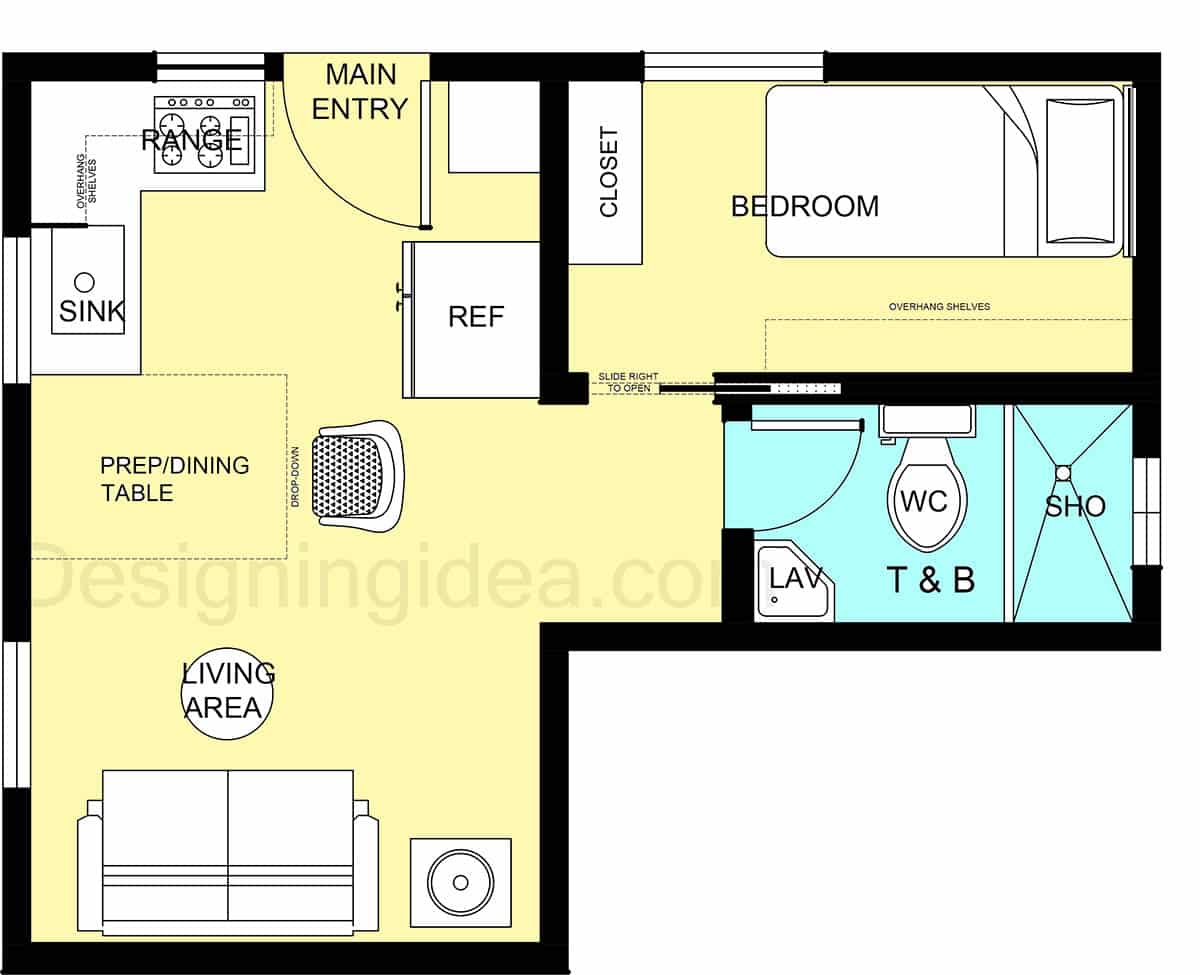
Benefits of a Corner Kitchen with Island:
- Efficient Space Utilization: Corner kitchens make the most of available space, especially in smaller homes or apartments.
- Increased Counter Space: An island or foldable countertop provides additional counter space for food preparation and cooking.
- Multi-Functional Use: The island can double as a dining table, saving space and creating a more casual dining experience.
- Improved Workflow: A well-designed corner kitchen can streamline your workflow and make cooking more efficient.
- Stylish Design: Corner kitchens can be stylish and visually appealing, adding a touch of modern elegance to your home.
- Corner countertops are one of the more efficient kitchen layouts as it doesn’t take much square footage while satisfying the work triangle. There’s also an option in placing the main entry along the living area.
Bathroom at the End Layout
Position the bathroom at one end of the house with the kitchen next to it. This creates a streamlined plumbing setup and leaves the rest of the space open for living and sleeping areas.
The free up space is advantageous for tight homes as the open space can be shared freely by different functions. The countertop as well as the other furniture are flushed against the wall to free-up the central area which can also serve as a traffic space. The bathroom at the end of the layout works well with small spaces as the distance from other areas is not too far away compared to more expansive square footage.
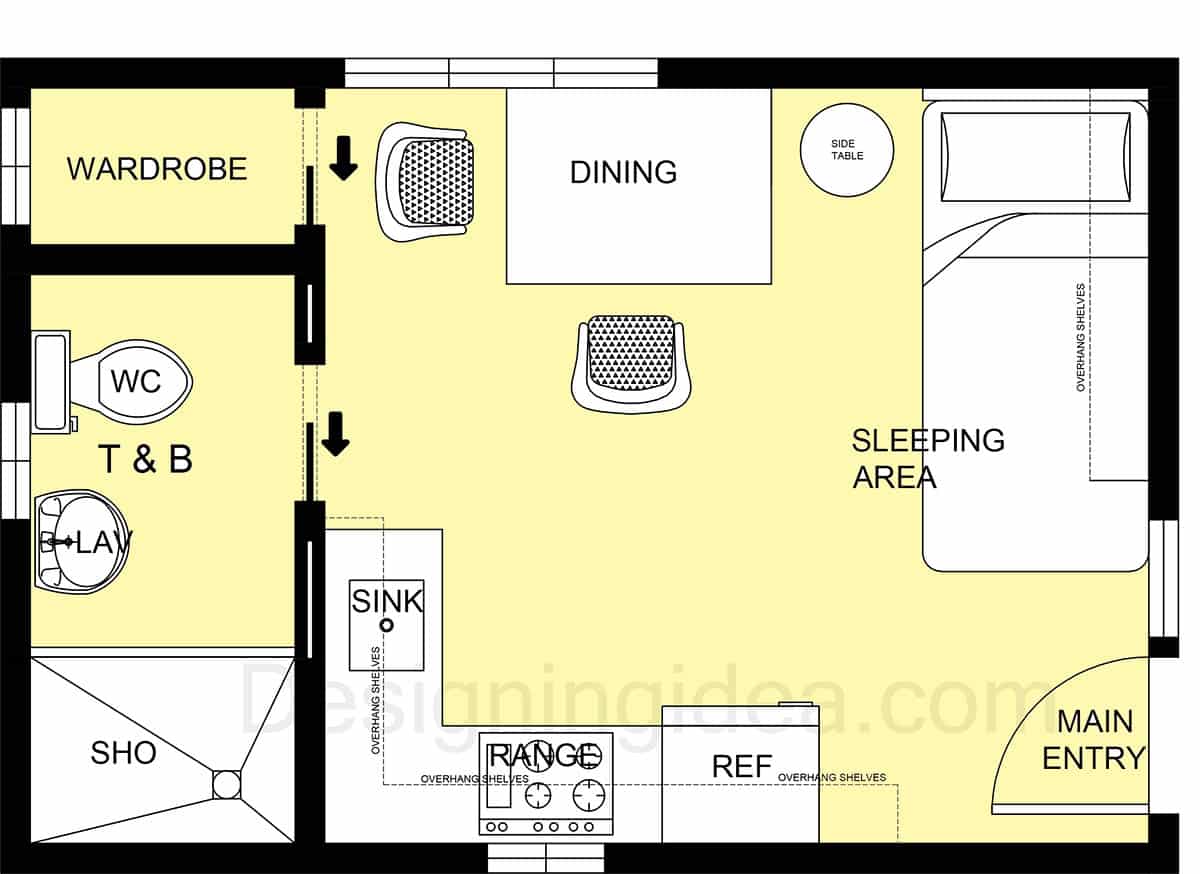
- Home size: A larger home can accommodate a bathroom at the end without causing significant inconvenience.
- Lifestyle: If you frequently entertain guests or have young children, a more centrally located bathroom may be preferable.
- Existing layout: The layout of your home may dictate where the bathroom can be placed.
Split-Level Tiny Plan House
Divide the home into different levels, where the living room is on a lower level, and the kitchen and bathroom are slightly elevated. This adds dimension without increasing square footage.
The split-level home effectively defines zones but does not entirely separate the zones from each other and maintains a continuous flow of the areas due to the minimal height. Generally, the typical height between the levels are maxed at the minimum acceptable height for a habitable room.

- Steepness: The stairs to the loft can be steep, requiring careful design and safety considerations.
- Limited Headroom: The loft space may have limited headroom, especially if the ceiling is sloped.
- Construction Complexity: Building a split-level tiny house can be more complex than a single-level design.
U-Shaped Kitchen with Hidden Storage
A U-shaped kitchen offers ample counter space while leaving room for hidden storage under stairs or in floor compartments, perfect for stowing away clutter.
The U-shape countertop plan provides ample storage as it becomes the focal point of the space. The layout is perfect for small homes that cook to entertain and would like ample preparation space. This layout leaves a small receiving area/living space that is separated but still has a level of connection as flow of space is still present. Stairs with a few feet high leaves a minimal flight of stairs. The height and number of threads in your stairs will depend on the slope of your soil foundation.
Main level

Upper Floor

- Ample Counter Space: The U-shaped design offers plenty of counter space for food preparation, cooking, and dining.
- Efficient Workflow: A well-designed U-shaped kitchen can streamline your workflow and improve efficiency.
- Hidden Storage: Under-stair or floor compartments provide additional storage space for appliances, utensils, and other kitchen items.
- Versatility: U-shaped kitchens can be customized to fit various styles and preferences.
Small Layout With Wraparound Windows
Use large, wraparound windows to create an open feel in a small space. This design can make the tiny house feel much larger, especially when paired with light colors and minimalist furniture.
A typical layout for small condominium units is orienting the toilet and bath near your stairs which is immediately accessible from the main door. Because of the limited space, the T & B is placed where there is least traffic, as you can maintain uninterrupted social areas.
Main level
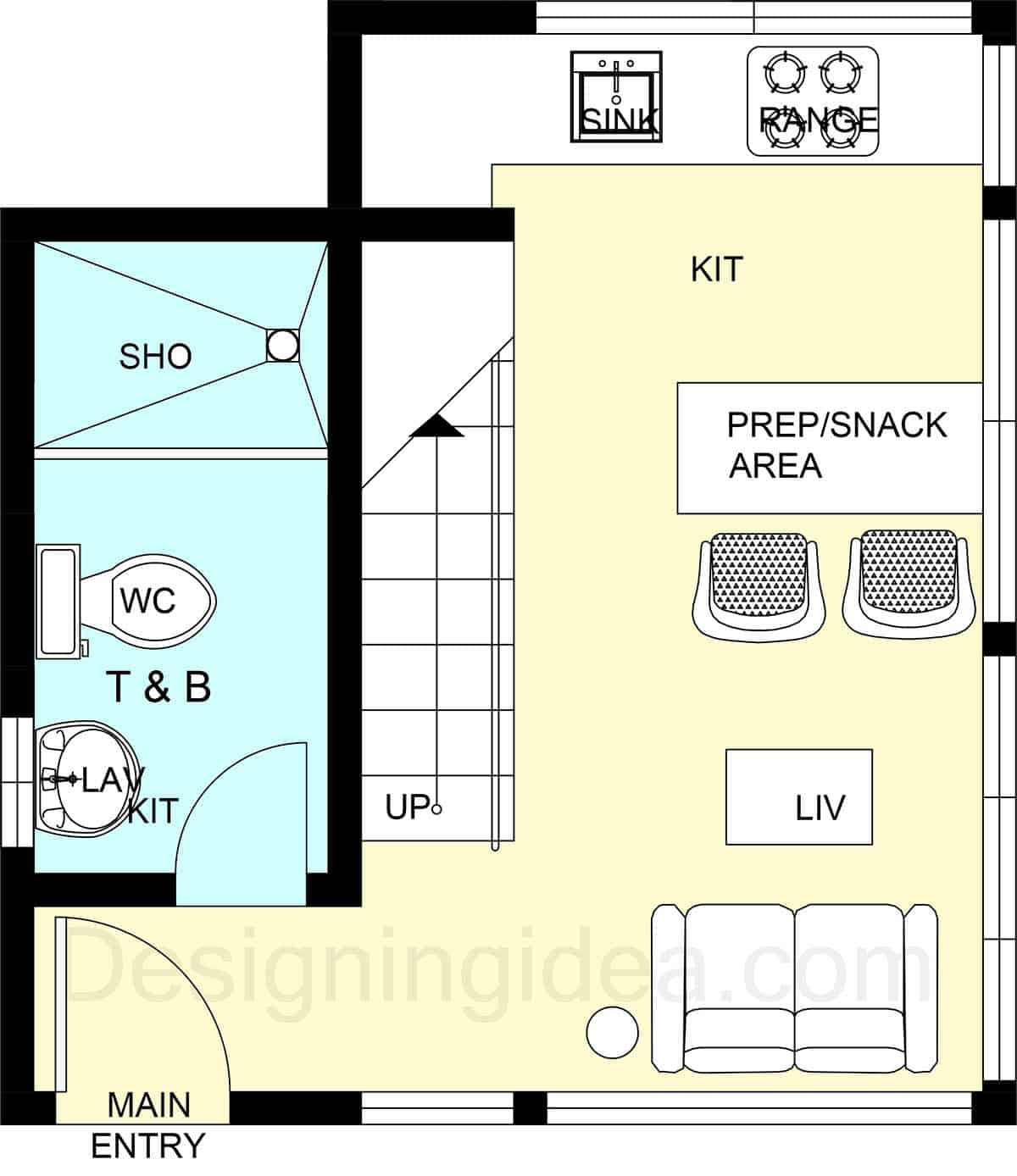
Upper level

Key Benefits of Wraparound Windows:
- Increased Natural Light: Wraparound windows flood the tiny house with natural light, creating a brighter and more cheerful atmosphere.
- Open and Airy Feel: The large windows make the space feel more open and expansive, even in a small footprint.
- Connection to Nature: Wraparound windows provide a strong connection to the outdoors, allowing you to enjoy the scenery and fresh air.
- Enhanced Views: Depending on your location, wraparound windows can offer breathtaking views of the surrounding landscape.
Home With Sliding Wall Partition
Install a sliding wall that separates the sleeping area from the living space during the night, while still allowing for an open-plan feel during the day. This is ideal for privacy without sacrificing openness.
A sliding wall partition is an excellent option for tiny house owners who desire privacy without sacrificing the open-plan feel of their living space. By installing a sliding wall, you can create a separate sleeping area at night while still enjoying an open and connected space during the day.
Sliding wall partitions are available in various materials, such as wood, glass, or fabric. They can be customized to fit your specific needs and style. Some options include barn doors, pocket doors, or accordion-style partitions. By incorporating a sliding wall, you can effectively divide your tiny house into distinct zones, allowing for privacy and flexibility.
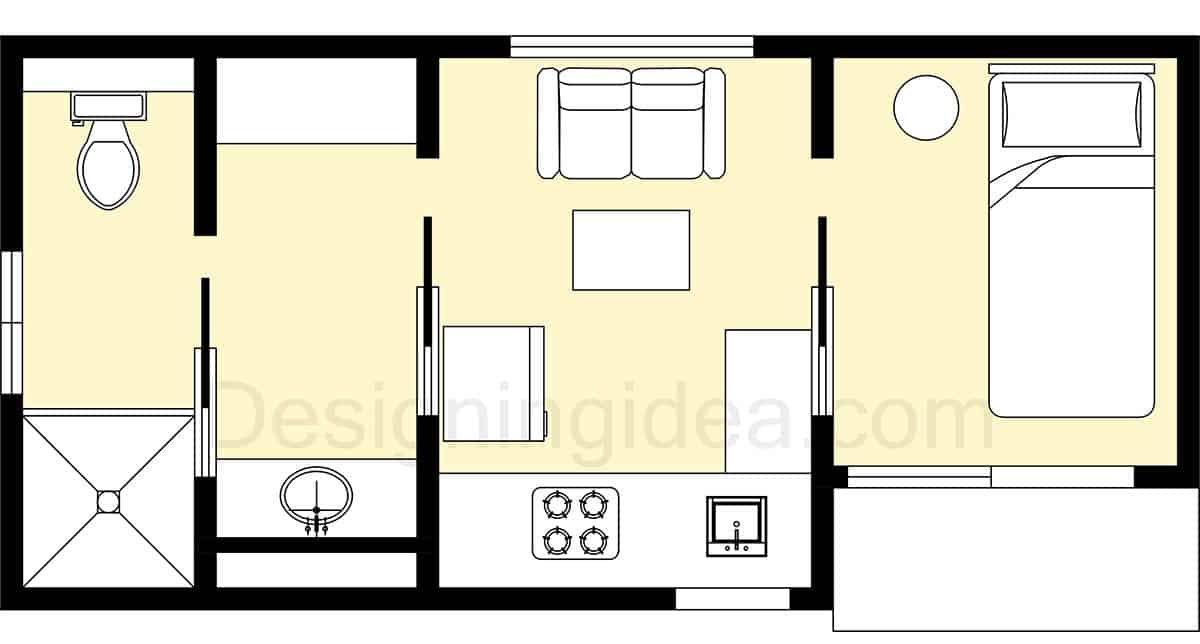
Considerations:
- Space Requirements: Ensure you have enough space for the sliding wall to move freely.
- Weight: Heavier materials may require additional support.
- Installation: Professional installation is recommended for a smooth and efficient installation.
Barn Doors: Barn doors slide along a track on the wall, adding a rustic and charming touch.
Pocket Doors: Pocket doors slide into a pocket in the wall, completely disappearing when open.
Accordion Doors: Accordion doors fold up and collapse into a small space when open.
Tips For Building A Small Home Floor Plan
Designing a tiny home that feels spacious requires working to use every inch intentionally to create a comfortable, and livable floor plan. Here are some of the primary ways to create a practical space.
Open Concept Design – An open floor plan is essential to avoid a cramped feeling. This means opening the kitchen, dining and living areas together into one cohesive space.
Multi-purpose Furniture – Multi-use and easy stored furniture like a sofa bed and fold-out table allows one to access them when needed.
Focus On Natural Light – Make sure to think vertically and use the walls and ceilings to encourage natural light through large windows to bring the outside in and avoid the small space from feeling that way.
Use Zones – Try to zone separate spaces with half walls or curtains rather than harsh dividers. Tuck necessities like the bathroom into the edges to keep the central layout open.
Use a Bedroom Loft – A loft sleeping area floating above the bathroom or kitchen makes use of prime real estate.
Using Vertical Space For Storage – Since storage space is limited, make use of every nook and cranny. Build storage into the walls, under the floors and stairs and within clever hiding spots in furniture. Go vertical with wall mounted shelves, lofts and cabinets to keep floors cleared.
Design A Compact Kitchen – The kitchen should feel sleek and modern and be space-saving. Opt for a galley kitchen along two walls to maximize functionality. Stock it with low-profile appliances and make good use of fold out countertops for eat-in dining.
Create A Functional Bathroom Floor Plan – The bathroom demands similar spatial wizardry. Use a wet bath design where the shower and toilet share the same area to save space. Use pocket doors that fold up to avoid taking extra floor space.
Minimalist Style – A minimalist style always helps a small space feel larger—stick to light colors, limit bulky furnishings and keep unnecessary items at bay.
Outdoor Extension – And don’t forget the outdoors! A tiny house can gain a whole extra “room” with a deck, patio or awning. Connect it seamlessly inside with folding glass doors.
For more layouts and floor plan ideas, see our collection of tiny home plans at our store.

